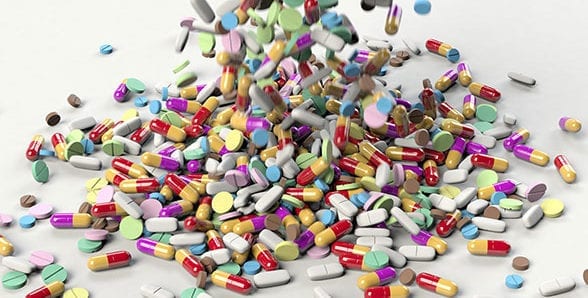 Crippling drug prices in the United States have brought even Democratic presidential candidate Bernie Sanders and President Donald Trump together: they both favour drug imports from Canada to ease the pain.
Crippling drug prices in the United States have brought even Democratic presidential candidate Bernie Sanders and President Donald Trump together: they both favour drug imports from Canada to ease the pain.
Vermont, Sanders’ home state, has approved this for state programs and 16 states are queuing up to follow suit.
The proposal is seductive, a way to circumvent the notoriously wasteful Food and Drug Administration and the cartelized U.S. pharmaceutical industry. The capitalists among us might also eye a piece of the half-trillion-dollar pie for the Great White North.
However, Canada can’t and shouldn’t be called on to fix the United States’ self-made problems. The logistics mean manufacturing drugs for one of the world’s largest consumers is a fool’s errand that would only endanger Canada’s already-unreliable drug supply.
The proposal is popular with voters, since a quarter of U.S. pharmaceutical consumers struggle to cover the cost. However, Americans have beaten Sanders and Trump to the punch. For decades, they’ve informally imported drugs from Canada, Mexico and elsewhere. The buyers include at least 19 million adults, of whom 38 per cent save more than C$390 a month. The secrecy and illegality suggest the imports are more prevalent than admitted levels.
The relative ease with which Americans already acquire foreign-sourced drugs is a red flag. It indicates this route has limited capacity to alleviate high drug prices in the U.S. Even Industry Canada, a federal agency tasked with promoting investment and innovation, admits “the Canadian drug market alone is insufficient to financially support or justify the full development costs of a pharmaceutical product.”
In fact, Canada can’t even keep itself stocked with necessary medication. The country is a large importer of drugs, to the tune of $8.7 billion in 2017. That still wasn’t enough to avoid shortages of 1,250 products in the past three years. The deficits include at least 10 per cent of those approved for consumption and some of the most commonly prescribed generics.
Despite the buying power of the provinces, Canada also has relatively high drug prices – at least from the standpoint of what the manufacturers receive. By one measure, drugs in Canada are the second most expensive in the world. Further, the Liberal Party is campaigning on expanded pharmacare. Should this come to pass, the control or removal of prices for eligible recipients would exacerbate the problem of insufficient supply.
Such is Canada’s inability to develop and produce drugs, her ‘exports’ are to some degree a misnomer. The Atlantic Institute for Market Studies, a free-market policy think-tank based in Halifax, has described drugs coming out of Canada as reimportation.
Steve Morgan, a health-policy professor at the University of British Columbia, explains that Americans aren’t actually importing drugs made in Canada. “They are just international medicines, manufactured typically at one or two plants worldwide to supply the entire market with a particular drug.”
Although the FDA is hardly a neutral source, it has estimated that “85 per cent of the drugs sold by supposedly Canadian pharmacies come from 27 countries other than Canada.”
Aside from the policy-induced reliance on insurance rather than out-of-pocket payments, there’s a pivotal underlying reason why drug prices are so high in the U.S. It’s that little thing called FDA approval.
Various estimates place the cost of bringing a drug to the U.S. market in the billions, requiring an average of 7.3 years – while many people die waiting. The Tufts Center for the Study of Drug Development places the figure at $3.4 billion to $3.8 billion. Drug companies are desperate to make their money back and price what the market will bear. The enormous FDA hurdle stands in the way of many drugs ever getting to market, since their revenue potential is too low.
The lack of access to necessary drugs was the basis for Trump’s signing of right-to-try legislation in 2018. This at least gave an exception to terminally ill patients to try experimental drugs.
U.S. firms engage in an extremely expensive research and approval process and they bank on making the money back from U.S. consumers. Canadian regulators then piggyback on this process with a wait-and-see approach. They approve only about half of those drugs available in the United States, negotiating the price down, and on average seven months after the initial release.
If the United States were to import price controls and re-import drugs from Canada, not only would this interrupt supplies north of the border, it would destroy the incentives for drug research and development.
The FDA is a barrier to affordable and readily-available drugs, and the U.S. agency needs to be confronted directly – even though that will mean intense lobbyist pushback.
Attempts to go around the FDA and portrayals of Canada as a panacea ignore the nation’s free riding and inability to maintain even its own supplies.
Fergus Hodgson is a research associate with the Frontier Centre for Public Policy.
Fergus is a Troy Media Thought Leader. Why aren’t you?
The views, opinions and positions expressed by columnists and contributors are the author’s alone. They do not inherently or expressly reflect the views, opinions and/or positions of our publication.


